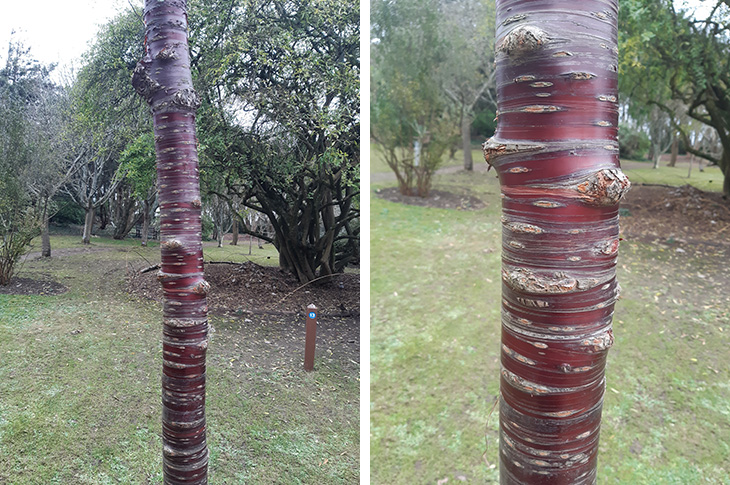For this month’s Plant Focus blog David Smart, Highdown’s Plant Heritage and Gardening Volunteer, writes about the Tibetan Cherry Tree.
Tibetan Cherry Tree: Prunus Serrula
Common Names: Tibetan Cherry / Birch-bark Tree / Ornamental Cherry
Latin Name: Prunus Serrula
Country of Origin: West China
Location in the garden: Prairie bed at the garden’s entrance and next to the visitor centre
The Sterns originally planted an avenue of these cherry trees in 1938 to give interest in the winter months. Sir Frederick Stern, in his book A Chalk Garden, refers to Prunus serrula as having “small white flowers of no consequence, but a very pleasant and highly decorative mahogany-coloured bark which gives interest and colour in the winter”.
Since then, new ones have been planted to replace older dying trees, however these also became diseased so it was decided to remove them upon the new redevelopments. One cherry tree from the avenue still remains next to the visitor centre, and more recently one was planted in the bed by the garden’s entrance to pay homage to those that were lost.
Prunus serrula is a round-headed bushy deciduous tree native to Tibet and Western to Southern Central China. The trunk has shiny coppery bark and the leaves are narrow, turning yellow in the autumn. The white flowers are 2cm in width, and bloom in small clusters. The tree can grow to a height of 12 metres and width exceeding 8 metres over a period of 20 ro 50 years.
Photos: The trunk of the Tibetan Cherry Tree – Prunus Serrula

Ideally, the Tibetan Cherry should be grown in full sun, but can tolerate any aspect or exposure. It prefers any moderately fertile chalk, sand, clay or loam soils that are moist but well-drained, at all but extremes of pH. They are frost-hardy to -20 degrees Centigrade. It can suffer from silver leaf, bacterial canker, blossom wilt, as well as pests such as caterpillars, leaf-mining moths and bullfinches. Despite this it is a low maintenance plant, though may need pruning in mid-summer if the disease silver leaf is a problem.
In its native range it was believed that cherry wood kept away evil spirits, so people would hang branches of cherry wood over their doors on New Year’s Day and make cherry wood statues to guard their houses.